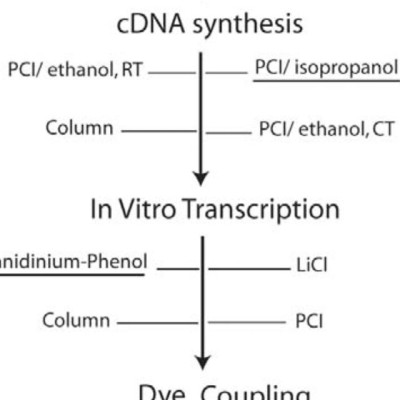Abstract
Expression microarrays have evolved into a powerful tool with great potential for clinical application and therefore reliability of data is essential. RNA amplification is used when the amount of starting material is scarce, as is frequently the case with clinical samples. Purification steps are critical in RNA amplification and labelling protocols, and there is a lack of sufficient data to validate and optimise the process.
Here the purification steps involved in the protocol for indirect labelling of amplified RNA are evaluated and the experimentally determined best method for each step with respect to yield, purity, size distribution of the transcripts, and dye coupling is used to generate targets tested in replicate hybridisations. DNase treatment of diluted total RNA samples followed by phenol extraction is the optimal way to remove genomic DNA contamination. Purification of double-stranded cDNA is best achieved by phenol extraction followed by isopropanol precipitation at room temperature. Extraction with guanidinium-phenol and Lithium Chloride precipitation are the optimal methods for purification of amplified RNA and labelled aRNA respectively.
This protocol provides targets that generate highly reproducible microarray data with good representation of transcripts across the size spectrum and a coefficient of repeatability significantly better than that reported previously.
